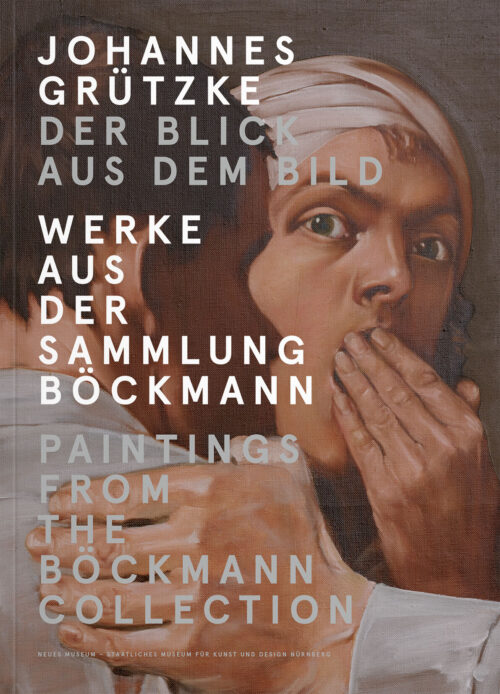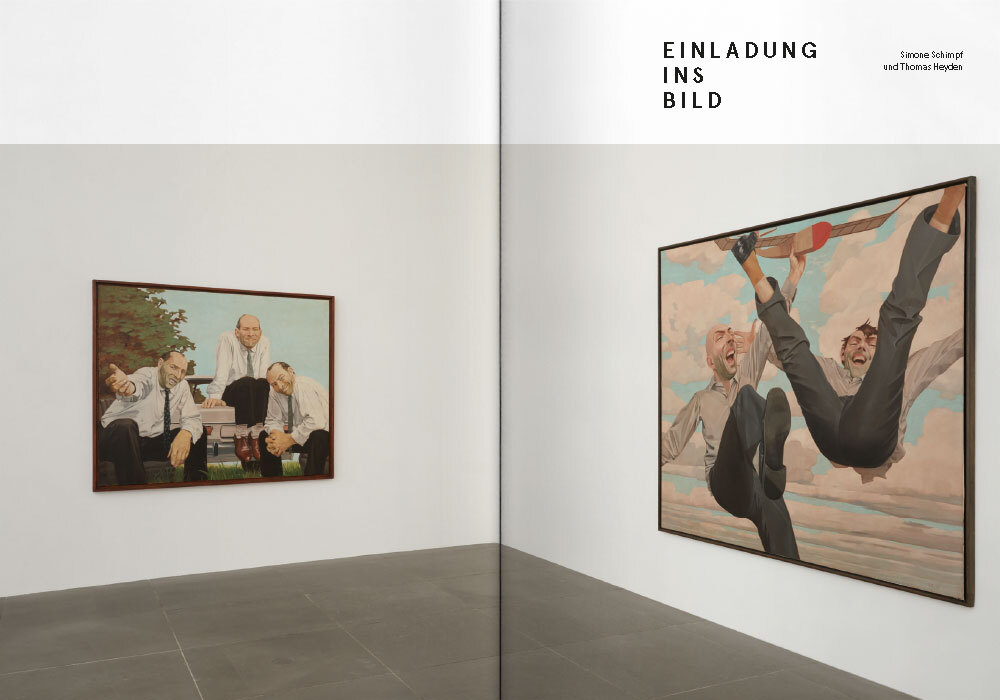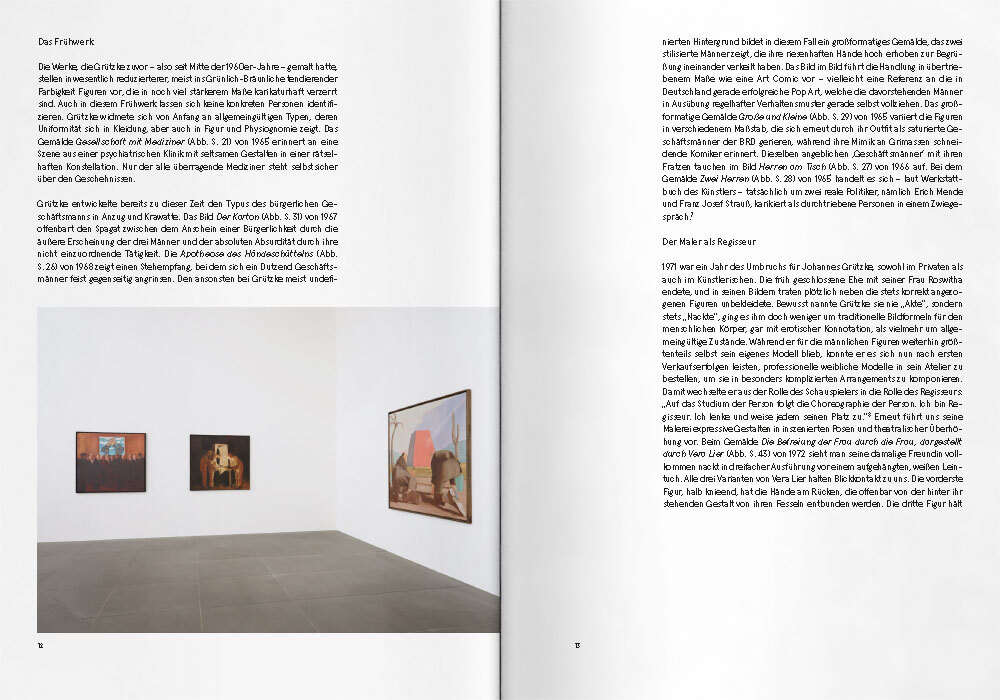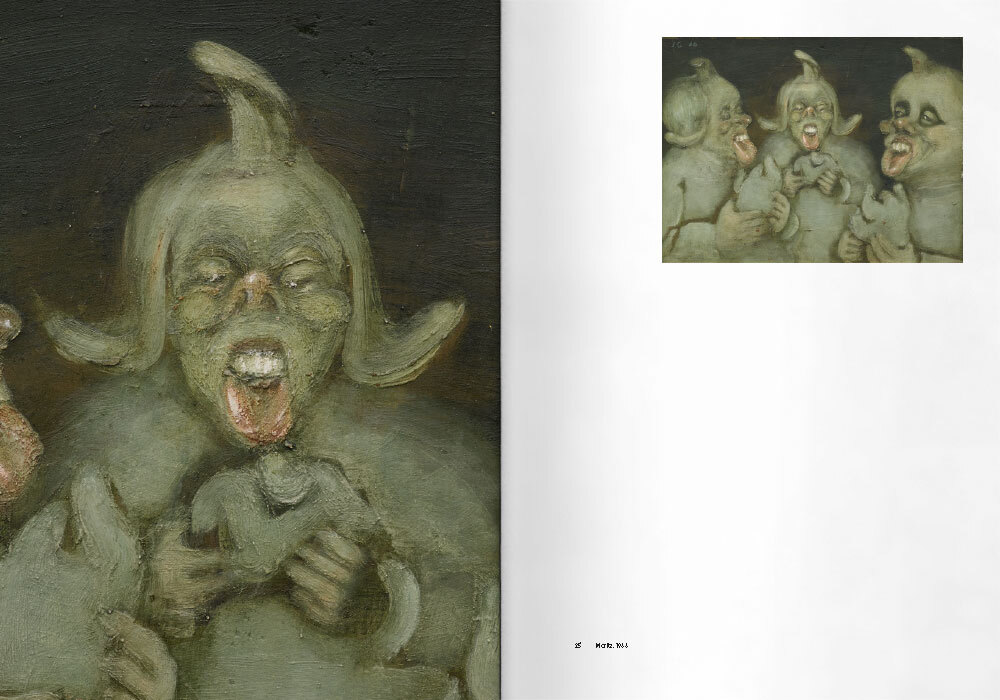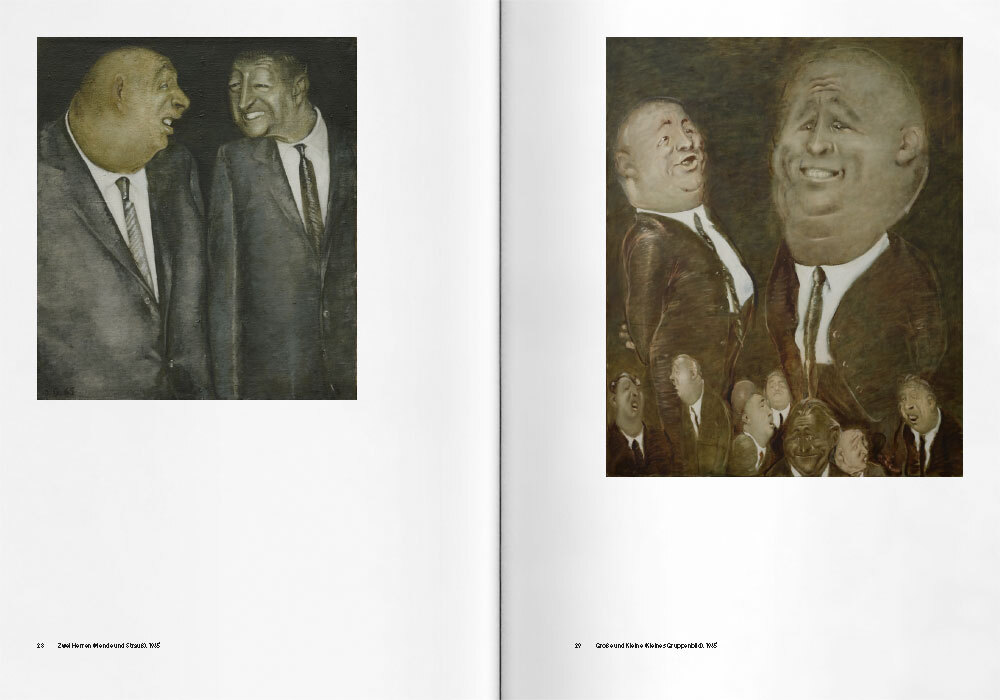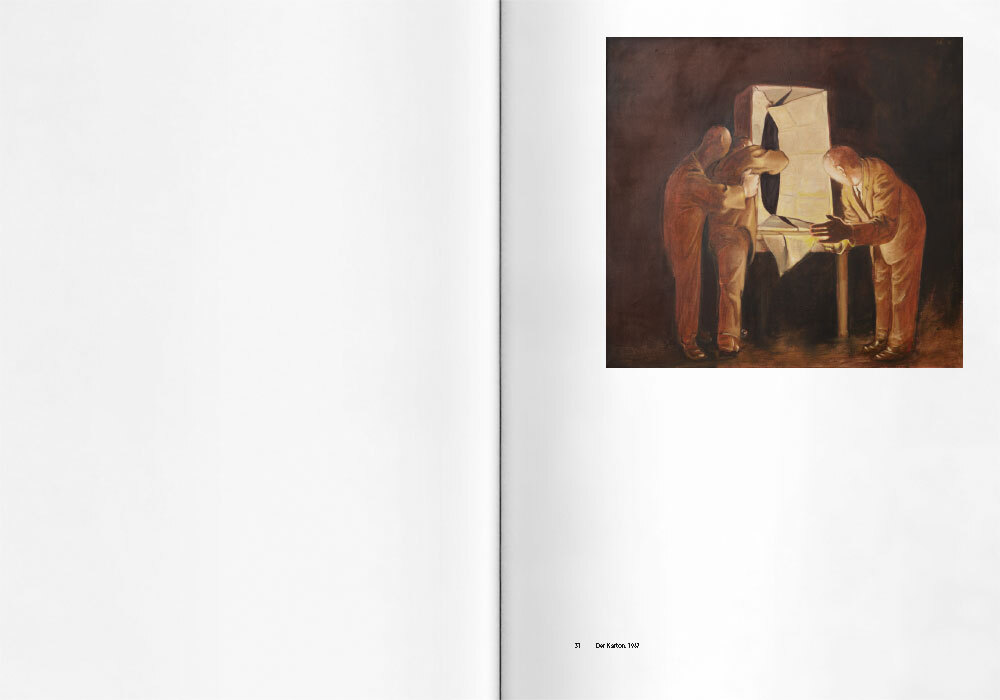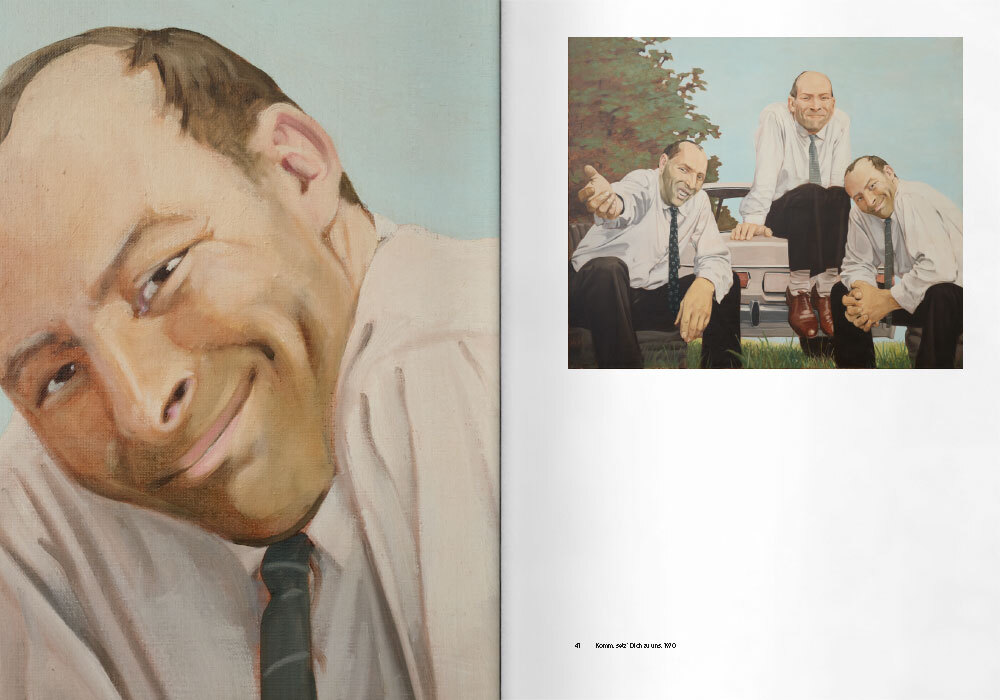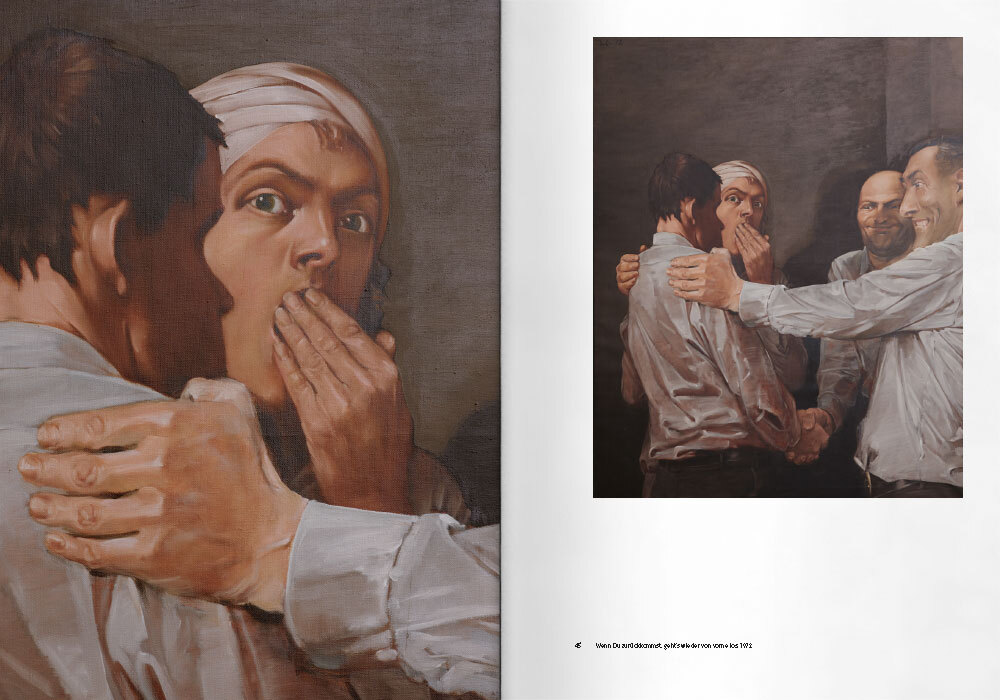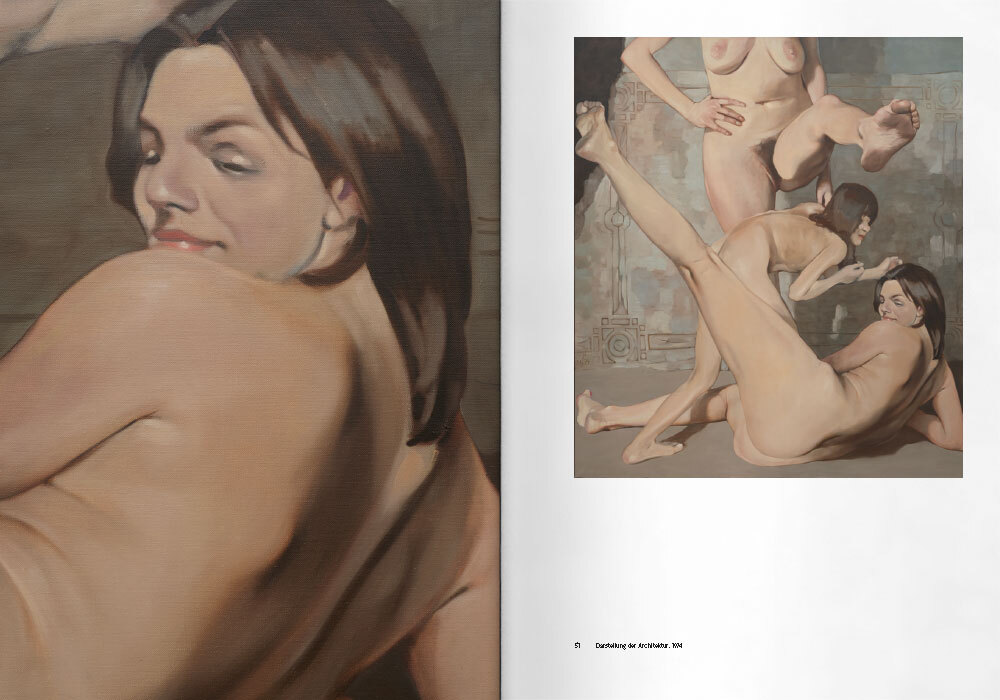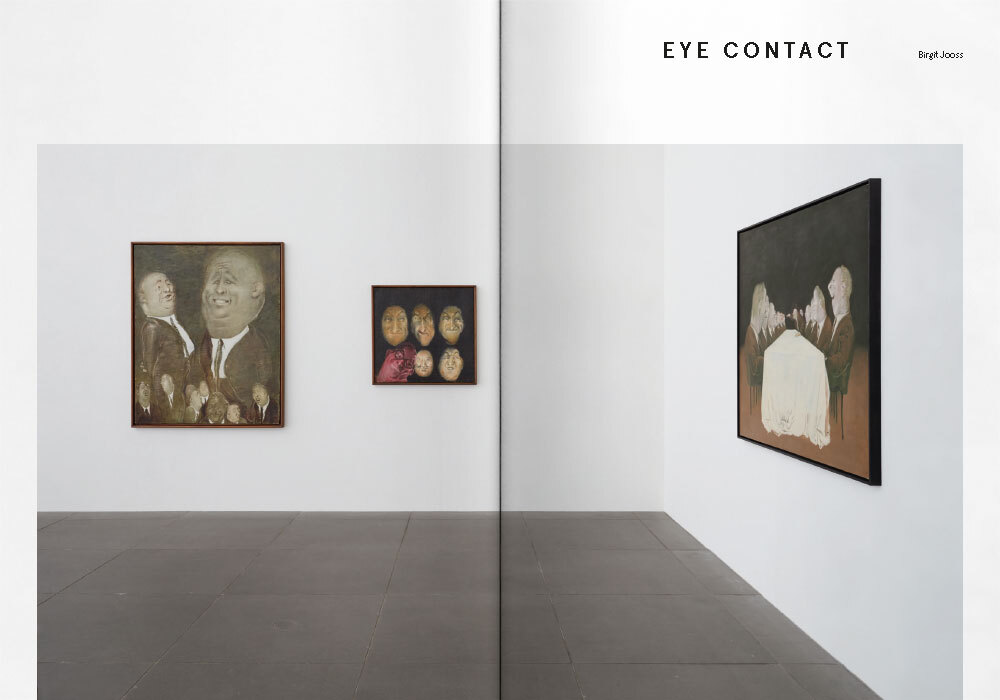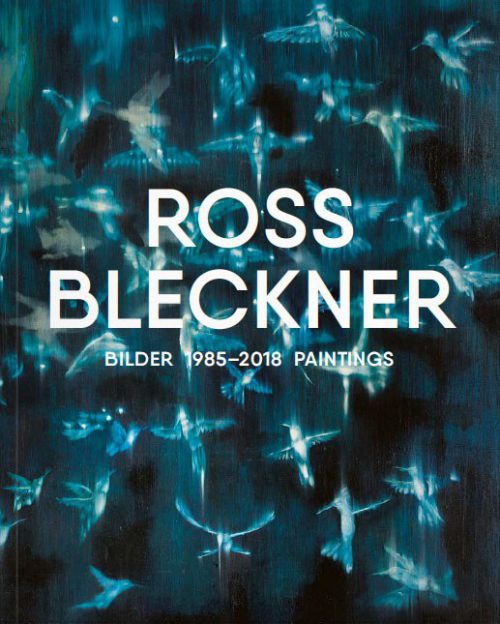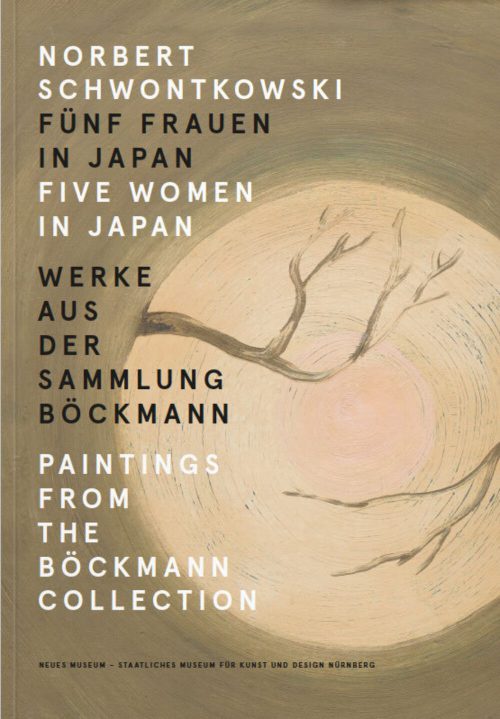
With his decision to concentrate on figurative painting, Johannes Grützke (1937–2017) took on the role of an outsider. As a main representative of the group of Berlin artists “Schule der Neuen Prächtigkeit” (“School of New Splendor,” founded in 1973), he rejected all attempts to categorize him with the label of realism. In spite of evident borrowings from art history, Grützke developed in the 1960s into a sensitive chronicler of his era. His best pictures simultaneously contribute to the cultural history of the young Federal Republic. They capture the saturation and complacency of a society that has attained prosperity.
The Berlin collector Georg Böckmann was a friend of the artist and owns an impressive collection of paintings from all phases of Grützke’s paintings. In 2021 the Neues Museum Nürnberg exhibited in its six facade-rooms a selection of works from the 1960s and 1970s. Points of emphasis were the early physiognomic pictures, genre painting in relation to the Federal Republic, self-portraits, paintings devoted to music and opera, and the female nude. The gaze from out of the picture proves to be a leitmotif of Grützke’s painting. In her essay, the Grützke expert Birgit Jooss investigates these eye contacts and provides an introduction to the thought and work of the painter.
YOU MIGHT ALSO LIKE
HOME

